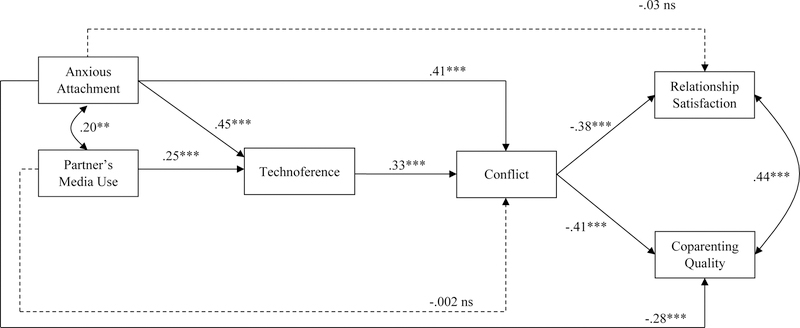Figure 2.
Model of predictors of technology interference and how technology interference in couple interactions may lead to conflict which may then affect feelings about the couple and coparenting relationship.
Notes. N = 239 couples, including 20 same sex male couples and 34 same sex female couples. The figure shows the standardized estimates. There were no gender differences in the substantive paths, so paths were constrained to be equal across men and women. There were also no sexual orientation differences in the substantive paths, so paths were constrained to be equal across sexual orientation.

